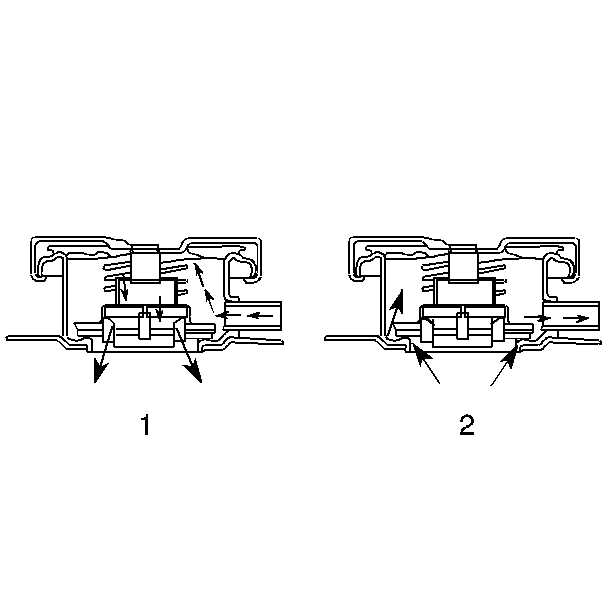These engines use a cross-flow, lightweight aluminum and plastic radiator. The radiator incorporates a brazed aluminum crossflow tube and center core.
Clinch tabs fasten the plastic end tanks to the core. A high temperature rubber gasket seals each of the end tanks. The right side end tank houses the transmission oil cooler. The left side end tank houses the engine oil cooler. Rubber gaskets and nuts seal the oil cooler fittings to the end tanks. The drain cock is plastic and this is at the bottom of the left side plastic tank.
Radiator Filler Cap

The crossflow radiator uses a pressure-vent filler cap to allow a buildup of between 93 kPa-124 kPa (13.5 psi-18 psi) in the cooling system. This pressure raises the boiling point of the coolant to about 129°C (265°F) at sea level. Do not remove the radiator cap in order to check engine coolant level. Check the coolant visually at the see-through coolant reservoir only.
The pressure-type cap contains a blowoff (pressure) valve (2) and a vacuum (atmospheric) valve (1). A spring of pre-determined strength holds the pressure valve against the valve's seat. This spring protects the radiator by relieving any pressure that exceeds design limits. A spring holds the vacuum valve against the valve's seat which permits opening of the valve in order to relieve vacuum created in the system when the system cools. This prevents radiator collapse.
Caution: As long as there is pressure in the cooling system, the temperature can be considerably higher than the boiling temperature of the solution in the radiator without causing the solution to boil. Removal of the pressure cap while the engine is hot and pressure is high will cause the solution to boil instantaneously -- possibly with explosive force -- spewing the solution over the engine, fenders and the person removing the cap.
The radiator cap is designed to discourage unintentional removal. The cap is round in shape without fingergrips. You must push the cap downwards in order to remove it. A rubber/asbestos gasket is added to the diaphragm spring at the top of the cap.
The following is embossed on the cap:
| • | A caution regarding opening of the cap |
| • | Arrows that indicate the proper closed position |
